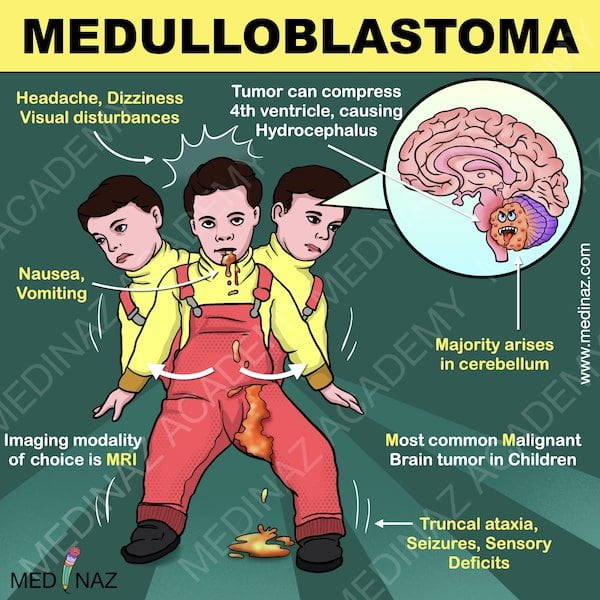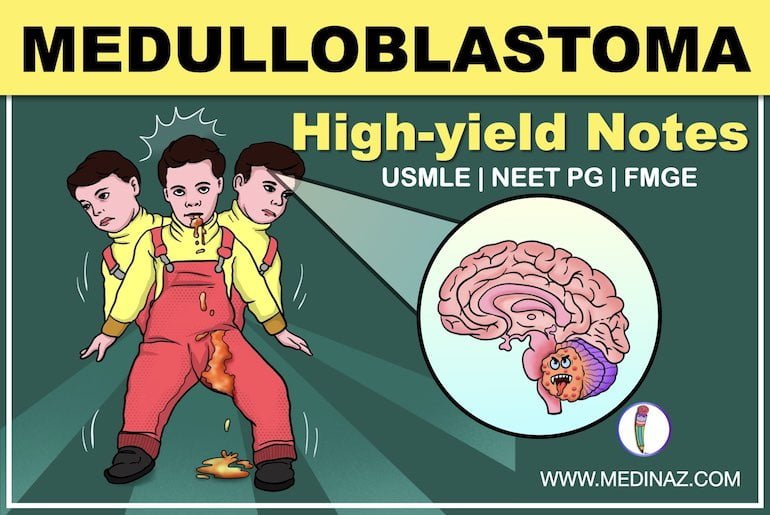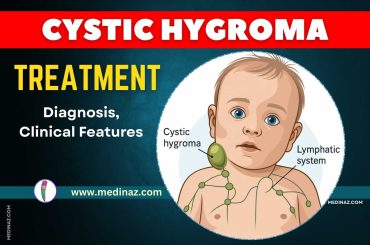Medulloblastoma Brain Tumor Highyield Notes for USMLE, NEET PG, FMGE and Board Exams
Medulloblastomas are the most common malignant brain tumor of childhood
It is accounting for ~20% of all primary CNS tumors among children.
They arise from granule cell progenitors or from multipotent progenitors from the ventricular zone.
Approximately 5% of children with medulloblastoma have an inherited syndrome, such as:
- Gorlin
- Turcot
- Li-Fraumeni
Histology of Medulloblastoma Brain Tumor:
Highly cellular tumors with abundant dark staining, round nuclei, and rosette formation (Homer-Wright rosettes).
Medulloblastoma classification:
In the 2016 WHO pathologic classification, they have been divided into four molecular subgroups:
1. WNT-activated (primarily affects children and has the best outcome);
2. SHH-activated (affects adults, infants, and children with the younger patients having the better outcome and adults doing poorly);
3. non-WNT/non-SHH, group 3 (frequently has disseminated CNS disease at diagnosis and has the worst outcome); and
4. non-WNT/non-SHH, group 4 (30% have metastases at diagnosis, but 5-year progression-free survival is 95%).
Common presentation of Medulloblastoma:
Headache, dizziness, visual disturbances
Truncal ataxia, seizures, sensory deficit
Nausea, vomiting

Diagnosis of Medulloblastoma:
MRI is the imaging modality of choice (ref)
Enhancing 4th ventricular mass
Hommer Wright rosettes
Sometimes associated with hydrocephalus
Treatment of Medulloblastoma:
Maximal surgical resection, craniospinal irradiation, and chemotherapy with agents such as cisplatin, lomustine, cyclophosphamide, and vincristine.
Prognosis for Medulloblastoma:
65-85% Survival dependent on stage/type
Poorer prognosis in infants
Reference: Harrison’s Principles of Internal Medicine, 20th Edition
Check other Medinaz Highyield Visual Notes:
Bacterial causes of diarrhoea – Illustrated highyield notes
Osteogenesis Imperfecta – Illustrated highyield notes
A Visual Learning Platform





